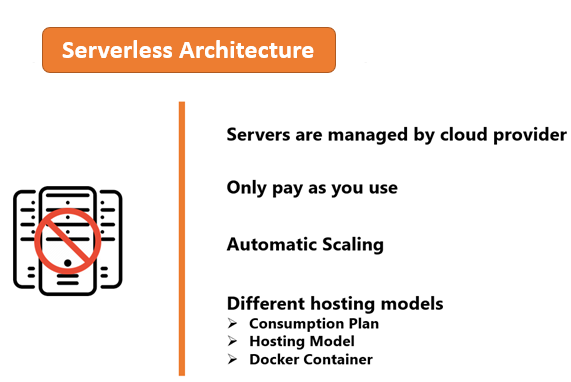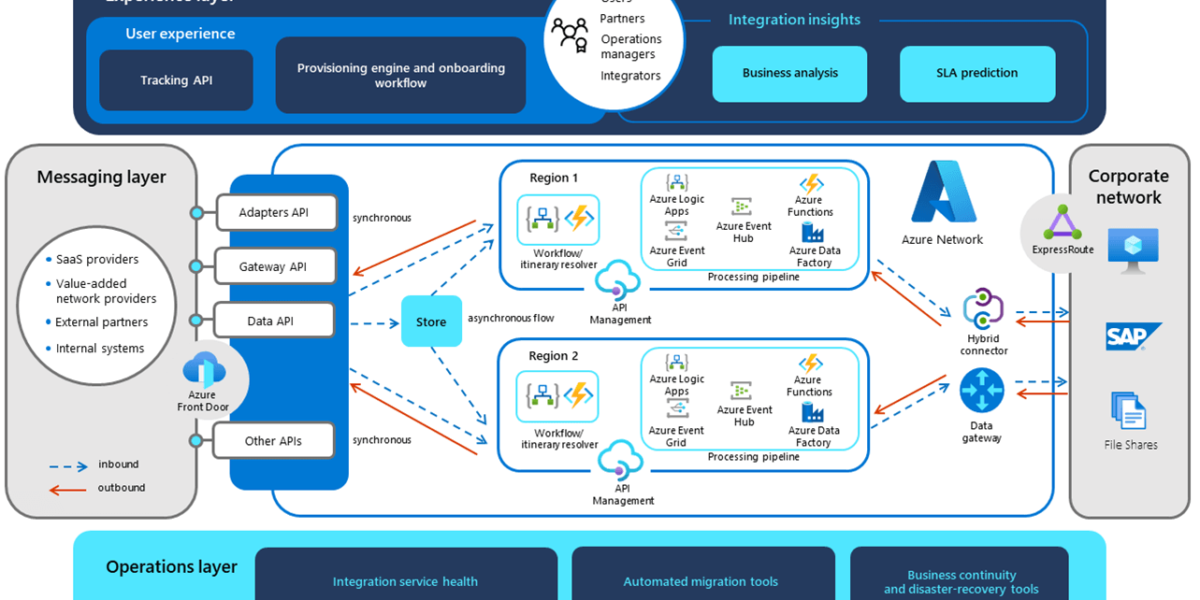Azure Serverless Computing is a concept based on serverless technologies. It empowers the developers to build fast applications so, as to meet the deadlines of the business houses / enterprises. With the serverless applications, the cloud service provider automatically provisions, scales, and manages the infrastructure required at the back end enabling the development teams to concentrate more on the development and ship applications in as faster time.
Serverless computing does not mean that the servers are not running code. This comes to picture when we want to hide the infrastructure provisioning from the development team. As the development teams concentrate more on the code, it ensures more productive work and improved efficiency.
BENEFITS
Going serverless will bring lot many benefits to the organization like efficiency increase, faster release cycles of the applications.

AZURE SERVERLESS PATTERNS
- Serverless functions
This pattern enhances the development of code by providing an event-driven model that triggers automatically to execute code on the happening of some event. The beauty is that you can attach multiple azure services and bind them seamlessly for performing different functions that satisfy the business requirements.
- Serverless API Gateway
This provides a fully secured and centralized entry point for serverless backend services. It helps the developers to create, manage, secure and publish backend API’s.
- Serverless applications
This infrastructure helps to host backend and front-end applications on fully managed services. For e.g. we can host ASP.NET Core backend application or host front applications written in React / Angular framework.
- Serverless Kubernetes
This embraces the architecture pattern for container-based application model. Kubernetes based orchestration model will help to automatically scale up and downgrade of the nodes / infrastructure, with changes in the load.
CONCLUSIVE THOUGHTS
The serverless architecture offers development teams and organizations in the form of an abstract layer that enables them to save time and resources. The aim is not only to minimize effort on setting up and dealing with issues of scaling for the infrastructure when the load changes, rather to concentrate on the development effort and bring in faster release cycles of the applications that ultimately helps in reducing the TCO.
To get started, or for more information about Azure Serverless Computing, contact our experts here at DMS Group today.




